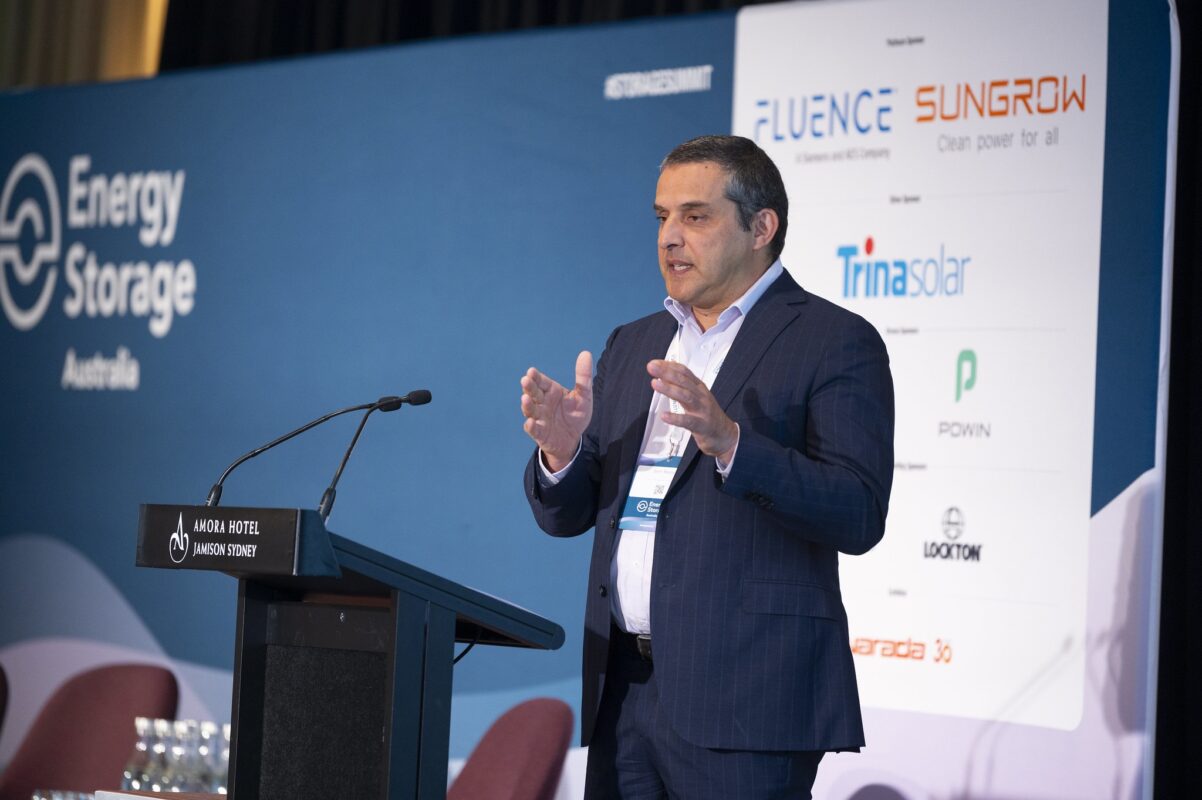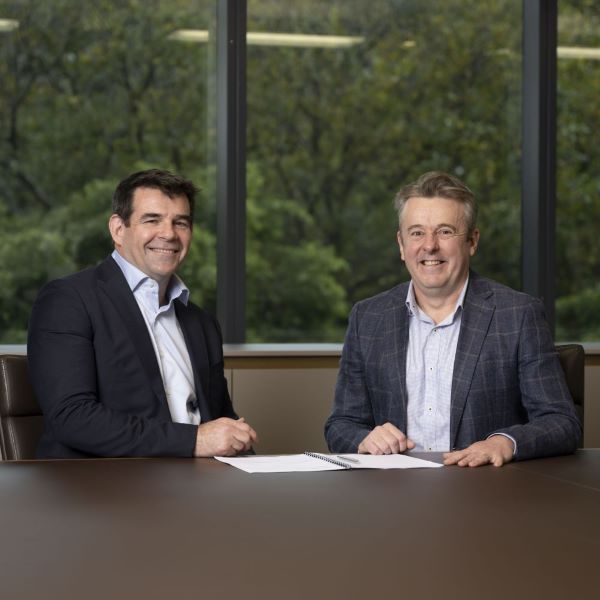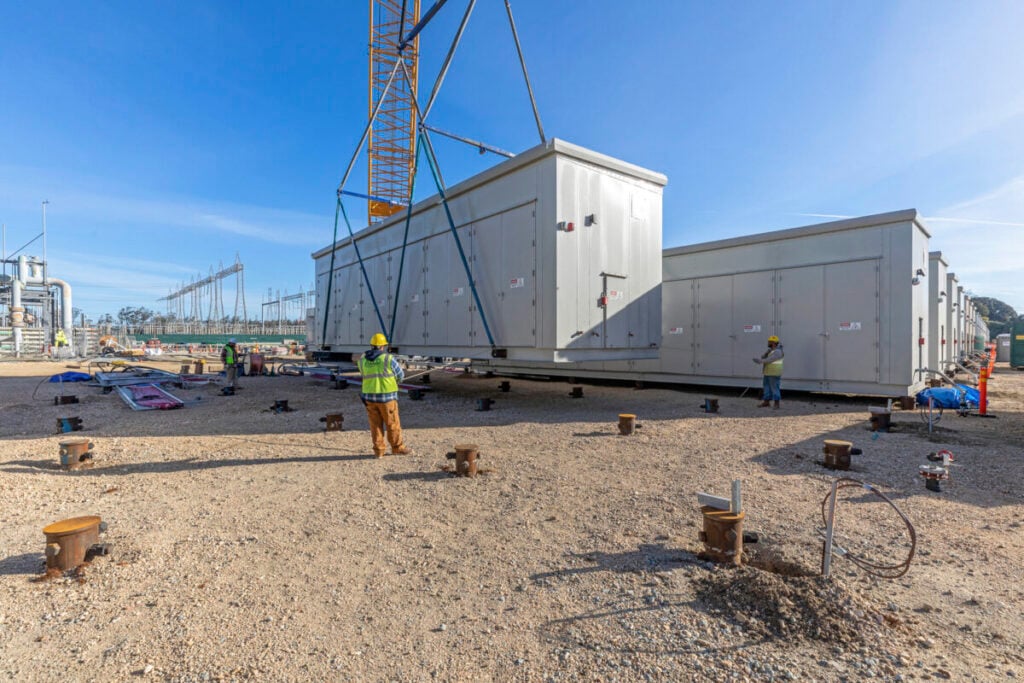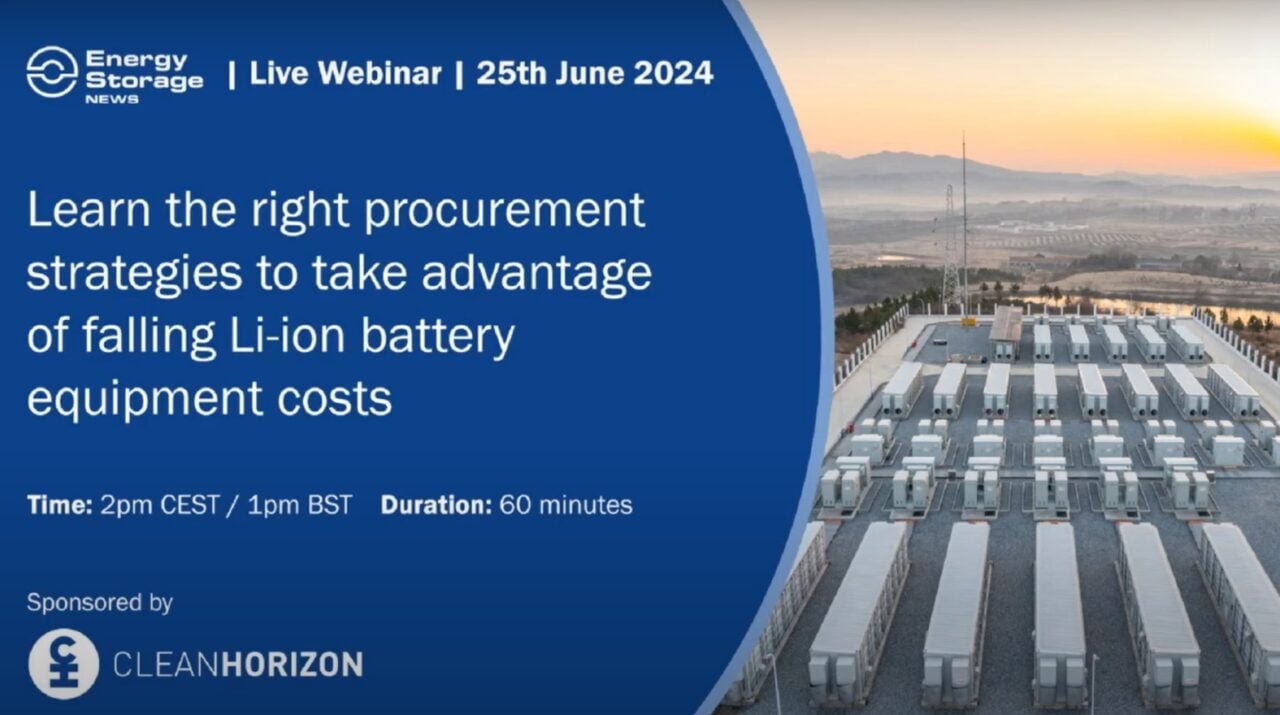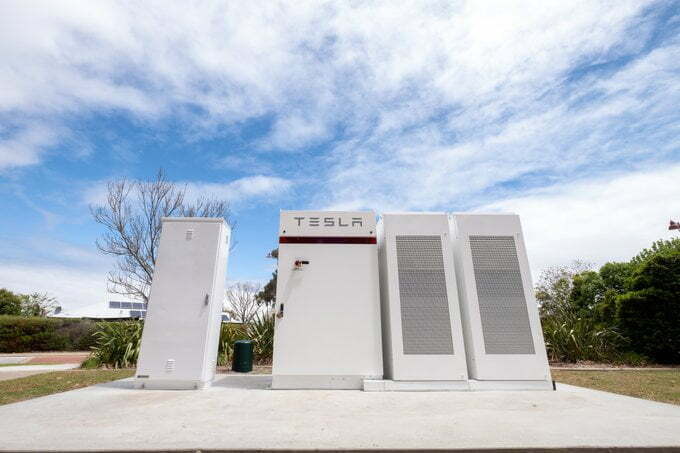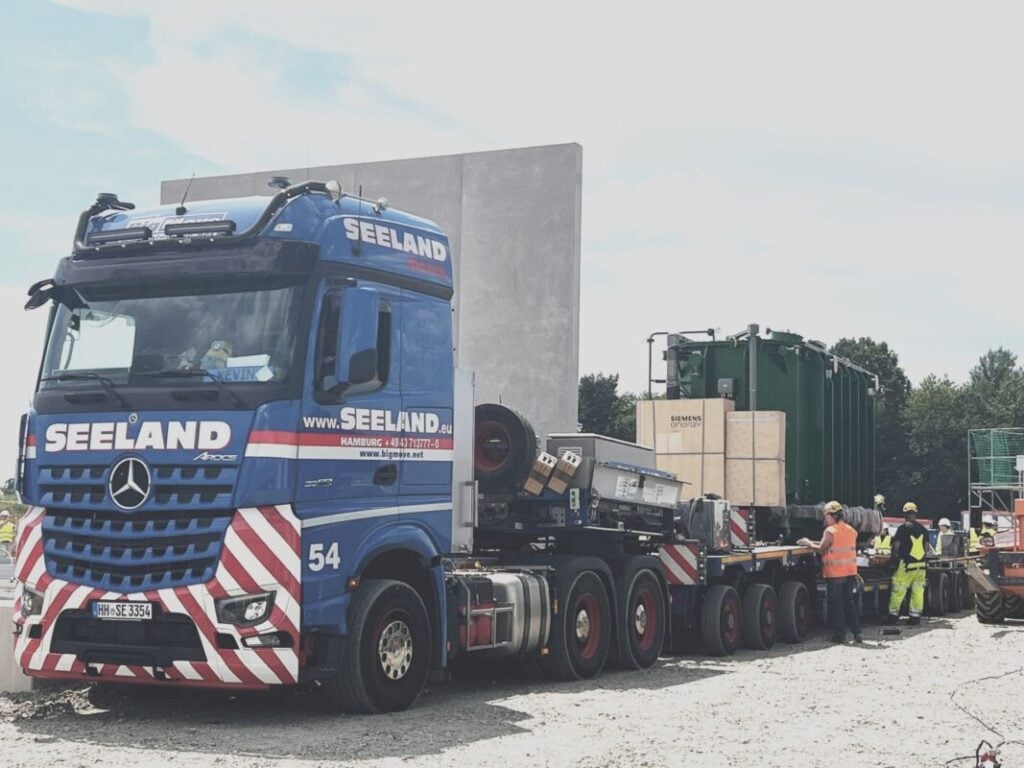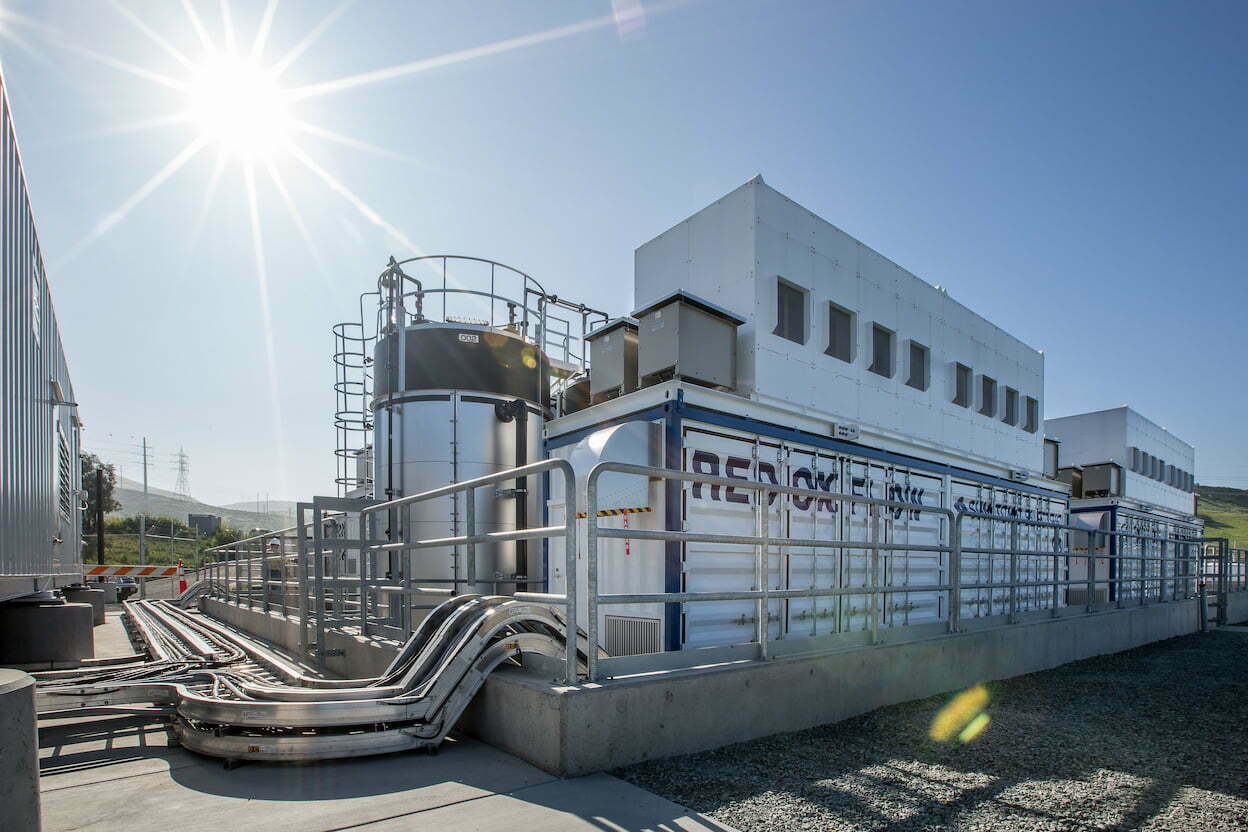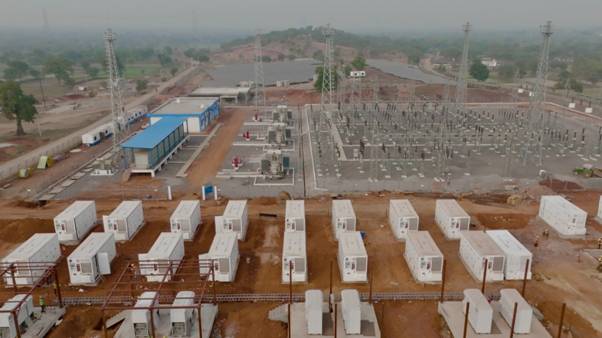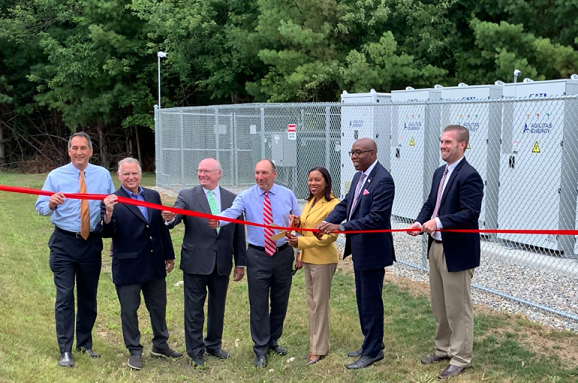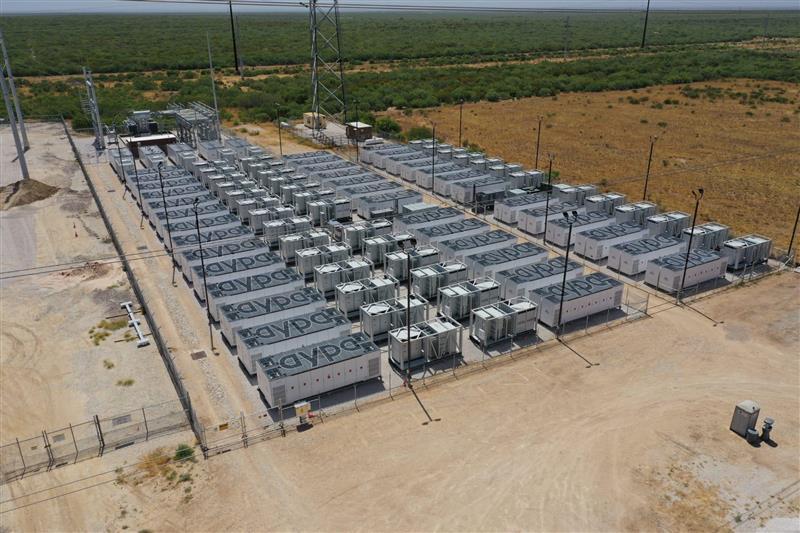Projects would connect to the South West Interconnected System (SWIS) state transmission network and participate in the Wholesale Electricity Market (WEM) of Western Australia.
Registration for the tender will close in early August. Project bid closing date will be in mid-August and selected bidders will be invited to submit financial value bids in the second stage of the process between September and November. Successful bids will be announced in February 2025.
The state is not interconnected with Australia’s other major population centres in the South and East, which are instead part of the National Electricity Market (NEM), although both markets are managed by the Australian Electricity Market Operator (AEMO).
The 24-page brief has been published by the operator’s service arm, AEMO Services, for the federal government Department of Climate Change, Energy, the Environment and Water (DCCEEW) which is coordinating the rollout with Australian state energy departments.
Government ‘had to intervene and make something happen’ with CIS
A total of 32GW of new renewable energy capacity is being sought through the CIS, including variable renewable energy (VRE) resources alongside 9GW of dispatchable capacity backed with energy storage.
The scheme aims to support Australia’s policy goal of getting to 82% renewable electricity by 2030, while enabling the retirement of coal-fired power plants.
It began with a pilot tender launched in New South Wales (NSW) last year in alignment with that state’s NSW Electricity Roadmap, which had already been seeking to write up long-term service agreement (LTSA) contracts with developers prior to the CIS’ creation from late 2022 onwards.
A joint tender for Victoria and South Australia launched in December last year and federal energy minister Chris Bowen announced the forthcoming mid-2024 start of the WA tender in April. Each of the tenders to date have been oversubscribed, with 40GW of bids from PV and wind developers received for the 6GW of capacity tendered for so far, as reported by sister site PV Tech in May.
The CIS has been created to help investors and developers in renewable energy and energy storage manage downside risk, Salim Mazouz, branch head of the energy division at DCEEW told Energy-Storage.news.
The scheme offers developers revenue underwriting, under agreed ‘floor and ceiling’ prices, that DCEEW describes as a long-term safety net for revenues. At the same time, projects that make merchant market revenues above the agreed ceiling price pay back the difference to the state.
“Fundamentally, what we found, both for storage and for variable renewables, is that there’s a high level of uncertainty currently in the market,” said Mazouz, who is head of the policy and engagement branch of the Office of the CIS at DCEEW.
“We sought to ensure that there is downside risk protection for investors, so we went in with the design of the Capacity Investment Scheme to ensure that, for example, debt has more of a chance of being harnessed in the context of these kinds of investments, because increasingly, equity holders were finding it difficult to get debt coverage due to the risk levels.”
In an interview with Energy-Storage.news Premium, to be published in full in the coming days, Mazouz said that with the energy market and energy policy in Australia subject to a lot of changes in the past, the DCEEW needed to “intervene and make something happen”.
Mazouz also presented some of the details and thinking behind the design of the scheme in a keynote presentation at the Energy Storage Summit Australia 2024, held in Sydney, NSW, in May by our publisher Solar Media. The summit returns to Sydney in March next year.
Long-duration energy storage tech players Redflow, Rondo, ESS Inc and e-Zinc in finance, project partnership deals
It covers a multitude of technologies, from electrochemical batteries to mechanical and thermal energy storage, with the latter often capable of providing power as well as heat (or cooling) energy.
While technically, lithium-ion (Li-ion) batteries are capable of longer durations than the typical 1-hour to 4-hour deployments that dominate today’s new additions of storage capacity and are considered cost-competitive for even 6-hour, 8-hour and perhaps even 10-hour applications, there are a broad range of non-lithium-based technologies emerging or already commercially available.
For example, US utility company Salt River Project, which is based in Arizona, just put out a request for proposals (RFP) specifically for non-lithium inverter and non-inverter-based energy storage technologies of 10-hour duration, for two pilot projects of between 5MW and 50MW rated power output.
Redflow – zinc bromine hybrid flow battery
The state of Queensland, Australia, is betting big on supporting and promoting its homegrown battery industry value chain.
Queensland launched a statewide battery strategy in February this year, as part of its AU$62 billion Energy and Jobs Plan policy to both stimulate the economy and enable its transition to 70% renewable energy by 2032, 75% by 2035 and net zero emissions by 2050.
A position paper commissioned by the state and written by consultancy Accenture found that Queensland has potential competitive advantages not just in the production and processing of Li-ion batteries, but also holds vast reserves of vanadium, the key ingredient in the electrolyte for vanadium redox flow batteries (VRFBs).
While VRFBs are the best-known electrochemical technology designed to scale up for long-duration applications, Queensland is also home to Redflow, a flow battery maker which bases its devices on zinc-bromine electrolyte chemistry.
The ASX-listed company announced this morning (2 July) that it has signed a deal with Queensland government-owned power company Stanwell Corporation. The deal could see co-developed flow battery technology used in a large-scale energy storage project “of up to 400MWh”.
A preliminary due diligence feasibility study will be conducted for an initial 5MWh flow battery project at a Stanwell innovation and training hub, using Redflow’s newest X10 battery.
The feasibility study should be completed early next year, for the deployment of the 5MWh system in the first half of 2026.
In a mid-2023 interview with Energy-Storage.news Premium, Redflow CEO Tim Harris explained the perceived advantages of the company’s technology and the use of zinc and bromine as abundant and relatively easy-to-source materials.
Redflow CEO Tim Harris (left), with Stanwell Corporation CEO Michael O’Rourke, signing the two companies’ agreement. Image: Redflow
That interview happened as Redflow was awarded its single biggest project to date, a 20MWh system for a renewable energy microgrid in California, supported with grant funding from the California Energy Commission (CEC).
Queensland’s battery strategy was published a few months before the Australian federal government published a National Battery Strategy, and along with a shared aim to make their respective jurisdictions competitive in the global battery value chain, one thing the two plans have in common is their identification of zinc-bromine flow batteries as a potential contender for scale-up and widespread global deployment.
Redflow will design and deploy the next-generation X10 technology in partnership with Stanwell, and the company said the potential 400MWh project could underpin its plans to build a factory in Queensland.
Rondo Energy – thermal heat and power storage
US-headquartered thermal energy storage provider Rondo Energy has secured €75 million (US$80.5 million) funding to support three projects in Europe.
The company manufactures a ‘Heat Battery’ in two configurations, aimed at providing low-carbon industrial heat and power that can be a ‘drop-in’ solution to replace current processes in sectors including food, beverages, clean fuel and the production of chemicals.
The Heat Battery uses a brick made of refractory material that can be heated up to 1,500°C (2732°F) and still retain its strength and form. The heat can be discharged over multi-day durations as required, outputting the energy as heat or steam, or driving turbines to generate electric power.
The tech is designed to enable sectors from which emissions are considered hard to abate to replace conventional technologies such as gas-fired power or heat. Like Redflow, Rondo claims the materials used in its storage technology’s design—oxygen, silicon, and aluminium—are abundant.
Rondo announced last week (26 June) that the new funding will come from the Bill Gates-founded Breakthrough Energy Catalyst sustainable VC investment platform and the European Investment Bank (EIB).
The company made its first commercial deployment in early 2023, shortly after that announcing ambitions to ramp up its annual manufacturing capacity to 90GWh, although a timeline was not given.
The three projects will be deployed for customers with differing needs.
One will be for polymer producer Covestro in Germany, where a Rondo Heat Battery system will produce continuous steam from variable renewable energy (VRE) inputs. Another will be in Denmark, for Greenlab, an industrial park where renewable energy will again be used, this time to produce steam that then drives turbines to generate low-carbon, baseload electricity.
Details of the third project are yet to be disclosed, but the technology provider said it will be for a food and beverage producer and will charge from solar PV deployed both on-site and off-site.
“Rondo’s deployment is crucial at a time when European manufacturers are urgently looking for ways to eliminate their dependence on natural gas,” Breakthrough Energy Catalyst head Mario Fernandez said, calling the Heat Battery a “unique opportunity” for industry to decarbonise with low-cost renewable energy and long-duration storage.
ESS Inc – iron flow battery
One of the other prominent non-vanadium flow battery technologies is the proprietary iron electrolyte flow battery designed by US manufacturer ESS Inc.
ESS Inc holds the IP for the technology and so only it and licensees, including ESI Asia-Pacific, a partner based in Australia, can make and deploy the systems.
Indeed, while its Australian partner’s efforts include a factory being built in—where else—Queensland, ESS Inc’s own domestic manufacturing base in Wilsonville, Oregon, has received a boost from the US government Export-Import Bank (EXIM).
The US official export credit agency has approved a US$50 million financing package, which ESS Inc. will use to fuel the expansion of the Wilsonville factory.
As of the beginning of 2023, the company’s annual production capacity stood at 800MWh. ESS Inc claimed the funding would enable a tripling of production capacity at the site.
The company said the financing package would help it meet demand from global customers, with iron flow batteries already delivered or contracted to overseas projects and portfolios in Europe, Australia and Africa.
EXIM provides loans and insurance to export-oriented businesses, and the support for ESS Inc has come from its Make More in America initiative. ESS Inc’s flow batteries are made in the US, with the majority of its supply chain also domestically based.
“This transaction will ensure that EXIM continues to meet our mandates to support technologies that are critical to the global energy transition while bolstering supply chains and supporting hundreds of good-paying jobs at home,” said EXIM chair Reta Jo Lewis, who noted that this will be the fourth EXIM package for ESS Inc.
NYSE-listed ESS Inc’s recent orders and ongoing projects abroad include the company’s first deal in Africa for a 1MW/8MWh project booked with Nigerian independent power producer (IPP) Sapele Power announced in May, and an order for a project in Germany of up to 50MW/500MWh with utility LEAG, booked in the summer of 2023.
e-Zinc – zinc-air battery
Canadian proprietary zinc-air battery tech company e-Zinc closed a Series A2 funding round in June with investors including Mitsubishi Heavy Industries (MHI).
The round was held as a follow-on to a successful US$25 million Series A round, and the latest was oversubscribed, the company said on 27 June.
Early-stage sustainability VC investor Evok Innovations led the round and along with Japan’s MHI, those joining included Export Development Canada—the northern equivalent to EXIM—another sustainable tech VC, Ultratech Capital Partners, and others.
According to the battery startup, the funding will be used to accelerate product development and fuel manufacturing plans.
In an April 2023 interview with Energy-Storage.news Premium, e-Zinc CCO and US country manager Balki Iyer said that the company would target construction of a factory with 1GWh annual production capacity which would open before the end of 2025.
Iyer, who said the e-Zinc technology is suitable for applications requiring 12-hour to 100-hour durations, also claimed the raw materials used in its production are “very, very low cost compared to those in lithium batteries,” and that it is suitable for a range of applications from industrial microgrids to renewable energy time shifting.
Iyer also discussed a planned project with another Japanese company, Toyota Tsusho, which is being carried out as a technology demonstration in partnership with the CEC.
“Following the upcoming pilot demonstrations and the validation of our manufacturing processes, we will have proven the advantages of our innovative energy storage solution and the infrastructure needed to bring our proprietary technology to market at commercial scale,” e-Zinc CEO James Larsen said of the new funding.
Conclusion: LDES challenges could give way to opportunities
The challenges for all of these companies competing to become long-duration complements or even alternatives to Li-ion battery storage are twofold.
These are to reduce costs to the point where they can be cost-competitive with Li-ion or thermal power generation when paired with renewables, and to survive long enough to see demand for LDES solidify into widespread market opportunities.
Energy markets around the world do not tend to value multi-hour storage beyond about 4-hour duration, but as renewable energy penetration grows and fossil fuel use declines, the need for longer durations of storage is set to grow.
BloombergNEF (BNEF) recently carried out its first-ever cost survey of LDES technologies, finding that some mechanical energy storage technologies, namely thermal storage and compressed air energy storage (CAES) are already competitive at scale with 4-hour duration Li-ion.
BloombergNEF recently published its first cost survey of long-duration technologies, benchmarked against lithium-ion Capex. Image: BNEF.
However, BNEF said that average Capex for flow batteries worldwide is about US$701/kWh, versus about US$301/kWh for a fully installed Li-ion battery energy storage system (BESS), although in China which has seen government support for flow battery demonstration projects and R&D, the average Capex for a flow battery was much lower at US$423/kWh.
In a video interview with Energy-Storage.news, published in May, Gabriel Murtagh, director of markets and technology at global trade association LDES Council discussed some of the issues around commercialisation, as well as opportunities up ahead, for long-duration technologies.
“Lithium-ion is a technology that’s been built, it’s been proven, it works, it can interconnect to the grid, it can provide grid services, and a lot of these other long-duration energy storage technologies are a little bit newer, so it’s going to take a little while for them to get to the same point in these competitive processes,” Murtagh said of some early solicitations for long-duration storage seen in markets such as California in the US and New South Wales in Australia.
“Some of those procurement requirements in California were [also] met by alternatives to lithium-ion, so there certainly have been some contracts signed for non-lithium-ion and we’ll see those on the grid in just a few years, in pretty large quantities, which is super-exciting,” Murtagh said.
Watch Energy-Storage.news’ interview with LDES Council’s Gabriel Murtagh below.
[embedded content]
The evolving landscape of international BESS transportation
As BESS deployment surges internationally, driven by ambitious renewable energy targets and grid modernisation initiatives, the complex logistics of transporting these systems come into sharp focus.
BESS are commonly equipped with lithium iron phosphate (LFP) batteries. These batteries are temperature-sensitive and if mismanaged, abused or defective can cause high heat which can result in fire. For this reason, they are considered Class 9 Miscellaneous Hazards in US shipping.
This article delves into the evolving landscape of international BESS transportation, exploring key aspects like shipping routes, modes of transport, the impact of global disruptions, associated costs and future trends.
Leading shipping lines have recognised the growing importance of BESS transportation and offer dedicated services. These companies provide specialised solutions for BESS cargo, catering to factors such as temperature control, secure handling and efficient loading/unloading due to the often large size and heavy weight of BESS units.
Containerised versus modular: choosing the right shipping approach
The mode of BESS transport depends on the specific system design and capacity. Here’s a breakdown of the two main approaches:
Containerised transport
While containerised transport offers an efficient solution for shipping BESS units, factors beyond physical size must be considered for successful implementation.
First and foremost, the BESS system must comply with critical transportation regulations such as UN3534, ensuring the safe transport of lithium-ion batteries. Additionally, containerised transport necessitates standardised BESS unit designs.
Advantages
This standardisation ensures compatibility with ISO containers and facilitates efficient logistics throughout the transport journey. The BESS unit’s dimensions must seamlessly fit within standard ISO containers, typically 20ft or 40ft in length. This eliminates the need for custom packaging and simplifies loading and unloading processes at ports and destination sites. Standardised BESS units also facilitate easier handling throughout transportation. This reduces potential delays and complexities associated with non-standard designs.
Utilising readily available ISO containers offers significant cost benefits compared to custom packaging solutions, eliminating the need for custom-designed packaging for each BESS unit.
The robust construction of ISO containers also provides a secure and weatherproof environment for BESS units during transport.
Disadvantages
Standard ISO containers, even the larger 40ft models, have inherent size limitations. This restricts the total energy storage capacity that can be transported in a single container. For large-scale BESS projects requiring high capacity, containerised transport might not be feasible.
The requirement for standardised design might limit innovation in BESS technology. BESS system providers with cutting-edge designs that deviate from standard dimensions wouldn’t be suitable for containerised transport.
A further drawback of containerised transport is that it doesn’t offer much flexibility for project-specific customisations. This can be a disadvantage for situations requiring unique BESS configurations to meet specific site requirements.
A final major consideration is safety. Lithium-ion batteries, the core technology behind BESS units, pose potential safety risks during transport if not handled correctly. To address these concerns, the United Nations (UN) has established the UN Model Regulations for the transport of dangerous goods. Within these regulations, UN3536 specifically addresses lithium-ion battery installations in transport.
Compliance with UN3536 is a mandatory requirement for the safe and legal transport of containerised BESS units. By adhering to these regulations, BESS system providers, shipping companies, and port authorities can ensure the safe and efficient movement of these vital energy storage solutions.
However, meeting UN3536 regulations might necessitate using specialised packaging materials or incorporating additional safety features within the containerised BESS unit. These measures can add to the overall cost of transportation.
Modular transport
Advantages
Customised BESS systems or half-completed systems are typically transported in a modular fashion. This involves breaking down the system into its components, such as battery racks, enclosures, and power conversion systems (PCS). These components are then shipped separately and reassembled at the destination site.
Such an approach has a number of advantages, such as scalability. Modular transport truly shines in its ability to handle high-capacity BESS units. Unlike containerised transport with size limitations, modular transport allows for the transport of massive systems crucial for grid-scale energy storage projects. This flexibility accommodates the growing demand for the larger BESS project sizes that are increasingly common in maturing markets.
Modular transport also allows for customisation to cater to specific project needs.
Lastly, modular transport offers greater adaptability than containerised transport, which can be limited by port infrastructure or access roads. Individual components can be delivered by various methods, such as trucks, trains, or even barges, depending on the site accessibility and project requirements.
Disadvantages
As with containerised transport, modular transport has numerous downsides. For example, the separate transport of components necessitates additional documentation and permits compared to containerised transport, where a single container serves as the primary focus.
Modular transport doesn’t necessarily guarantee lower overall costs. Several factors can contribute to potentially higher expenses such as:
Unlike pre-assembled containerised units, modular systems require on-site assembly and commissioning. These processes involve labour costs, potentially specialised equipment and additional time compared to simply connecting a containerised unit. Successful reassembly of a modular BESS also requires skilled personnel with expertise in BESS technology and assembly procedures. The availability of such expertise at the destination site can be a crucial factor for project success.
Lastly, individual components during modular transport are more susceptible to weather elements compared to pre-assembled and enclosed containerised units. Implementing adequate weatherproofing measures during transport is essential to safeguard BESS components.
Understanding BESS transportation costs
The cost of transporting BESS units varies depending on several key factors. Larger and heavier BESS systems naturally incur higher transportation costs due to increased fuel consumption and potential limitations on containerised transport.
While specific costs can vary depending on project specifics, industry estimates suggest that transportation costs for BESS systems can range from 5-15% of the total project cost. Insurance adds an additional 1-2% to the overall cost.
Regulations for lithium-ion BESS transport
The final step of the BESS shipping journey is the installation and commissioning. Image: Burns & McDonnell
It is paramount to transport lithium-ion batteries safely. If not handled and transported correctly, lithium-ion batteries pose potential fire and explosion risks.
To address these concerns, in addition to the UN regulations, the International Maritime Organization (IMO) regulates the transport of dangerous goods, including lithium-ion batteries, under the International Maritime Dangerous Goods (IMDG) Code.
The chosen mode of BESS transport also impacts safety. Containerised transport generally offers a more controlled environment, with the entire BESS unit housed within a secure container. Modular transport requires careful handling and packaging of individual components to comply with IMDG Code regulations.
The future of BESS transportation
As countries like the US and Europe aim to reduce reliance on overseas manufacturing and strengthen domestic supply chains, BESS production facilities are expected to be built closer to these markets. This will significantly reduce transportation distances and associated costs.
Meanwhile, advancements in battery technology might lead to more compact and lighter BESS designs. This could facilitate easier and cheaper containerised transport for larger systems. For example, research into next-generation battery chemistries like lithium-sulfur holds promise for increased energy density, potentially reducing the size and weight of BESS units.
Nevertheless, the transportation of BESS systems plays a critical role in enabling the global energy transition. As BESS deployment continues to accelerate, a comprehensive understanding of the evolving landscape of international BESS shipping is essential. By optimising transportation strategies, minimising costs and prioritising safety, the industry can ensure the efficient and secure delivery of these vital energy storage solutions, paving the way for a more sustainable and reliable energy future.
This is an extract of a feature article that originally appeared in Vol.39 of PV Tech Power, Solar Media’s quarterly journal covering the solar and storage industries. Every edition includes ‘Storage & Smart Power’, a dedicated section contributed by the Energy-Storage.news team, and full access to upcoming issues as well as the 10-year back catalogue are included as part of a subscription to Energy-Storage.news Premium.
About the Author
Vienna Zhou, CEO of TROES Corp, is a seasoned expert with 17+ years in renewable energy, cleantech, and a background in Fortune 500 companies and government roles. With a mechanical engineering and MBA background, she founded TROES in 2018, an energy storage and microgrid solution company.
VIDEO: The right BESS procurement strategies to take advantage of falling Li-ion costs
Clean Horizon, an energy storage consultancy that supports developers and investors in the procurement of energy storage solutions, shares views on the current trends in equipment prices and technological advances observed, as well as on the procurement strategies that can be applied in order to achieve lowest costs with acceptable performances and minimum effort.
In terms of evolution of Li-ion battery prices, Clean Horizon presents the recent downward evolution of system prices, the record low prices offered by suppliers over the last months, and the possible evolution of battery prices for next year.
This downward trend is also pushed by the evolution of equipment design and especially the increase in the energy density of off-the-shelf solutions. Clean Horizon details the latest trends, the associated observed performances, and the impact such changes are having on project profitability.
We then examine the current procurement strategies and their advantages and drawbacks in the current context of low battery costs.
Speakers:
Samuel Portebos, partner and vice president of engineering and Clean Horizon
Naim El Chami, lead analyst, Clean Horizon
Salomé Perperot, junior analyst, Clean Horizon
[embedded content]
You can also register to watch the webinar from the on-demand section of the site, which will also enable you to access presentation slide deck, and where you can find all our other Energy-Storage.news webinars.
ARENA awards US$94 million for community battery energy storage in Australia
Once connected to the grid, the batteries will aim to alleviate local network constraints, increase rooftop solar PV capacity, reduce emissions, and lower consumers’ electricity costs.
As reported by Energy-Storage.news when Round 1 opened in April, proposals must include at least five battery storage systems (BESS) each, with systems that share a grid connection counted as one project. The programme is being paid for with money from the federal government’s Household Solar Budget.
ARENA CEO Darren Miller outlined the role community BESS could play in Australia’s energy mix citing their energy resiliency, reliability and sustainability.
“ARENA is pleased to support the roll out of these batteries through our transformative program which will have a significant impact upon Australia’s energy and grid security while delivering cleaner and more cost-effective energy for our communities. We are encouraged to see this important asset class being demonstrated at such a scale and expect that this funding round will kick start the neighbourhood-scale storage sector.”
Queensland and New South Wales top battery allocation
Queensland and New South Wales will receive the most community batteries, with 69 and 95, respectively. This is followed by Victoria with 37 batteries, Western Australia with 28 and South Australia with 24. Tasmania will receive six batteries, and the Northern Territory will receive 16.
The batteries will have an aggregated storage capacity of up to 281MWh, with ARENA to contribute up to AU$0.51/Wh in grant funding against an average cost of AU$1.28/Wh (39.8%).
ARENA said the batteries will benefit a range of energy consumers, including households, hospitals, schools, tertiary education institutions, council facilities, housing developments, social and community housing, sports facilities, libraries, aquatic centres, shopping centres, and regional and remote communities.
20 applicants to benefit under Streams A and B of the scheme
The batteries will be provided to companies via the initiative’s Stream A and Stream B, divided between Distribution Network Service Providers (DNSPs) in Stream A and Non-DNSPs in Stream B.
Under Round 1 of the scheme, which opened in April 2024, ARENA received 140 eligible Expressions of Interest, which have now been narrowed down to 21 applications from 20 applicants. In Stream A, 10 applications requesting AU$67.3 million have been approved, with 11 applications requesting AU$75.7 million in Stream B.
Successful applicants for the community BESS funding include:
Stream A (DNSPs)
Ausgrid (NSW)
Endeavour Energy (NSW)
Energex (2 applications, QLD)
Ergon Energy (QLD)
Horizon Power (WA)
Power and Water Corporation (NT)
SA Power Networks (SA)
Tasmanian Networks (TAS)
Western Power (WA)
Stream B (Non-DNSPs)
Department for Energy and Mining (SA)
Enel X Australia (Multiple states)
FRV Services Australia (VIC)
Indigo Power (Multiple states)
Gemlife (Multiple states)
Hydro Tasmania (Multiple states)
Mondo Power (VIC)
Next Green Group (Multiple states)
Shell Energy Retail (NSW)
Transport for NSW (NSW)
ZEN Energy Retail (NSW)
ARENA expects to launch a second round of community battery funding in late 2024, with a funding allocation of at least AU$28 million.
As readers of Energy-Storage.news may be aware, the City of Melbourne switched on its first community BESS last week (26 June) at Council House, as part of its ‘Power Melbourne’ scheme.
The newly installed battery system has a capacity of 450kW/1.1MWh, and the council is targeting 5MW of similar assets. Another BESS is anticipated to be installed at Boyd Community Hub in July and Library at the Dock later this year.
Market consultancy group Sunwiz also weighed in on the potential of community BESS in Australia, which it dubbed the “Year of the Big Battery”. The group said adding that community battery—or ‘neighbourhood battery’ projects around Australia, classified within the commercial and industrial (C&I) segment—will help drive a 50% growth in C&I installs in 2024.
Fluence, investor MW Storage sign third Finland BESS deal, progress celebrated at 200MWh Germany project
The Nordic region’s ancillary services markets present an opportunity for fast-responding battery storage assets. According to research group LCP Delta, more than 300MW of grid-scale BESS is expected to come online within the next two years in Finland alone.
According to LCP Delta, that makes Finland the second hottest prospect in the Nordics after Sweden. As of mid-May, Sweden had a pipeline of 400MW of grid-scale batteries expected to come online within 2024.
The northern European region includes Denmark, Finland, Iceland, Norway and Sweden, in addition to autonomous territories and regions in the Faroe Islands, Greenland and Åland.
While there are some energy trading opportunities within the Nord Pool power exchange, the ancillary services markets are the main draw for BESS developers, leading to the majority making the decision to size their assets at relatively short durations.
That said, LCP Delta and other analysts have pointed out that opportunities to make big money from grid services in the Nordics may be relatively short-lived due to the shallow nature of those markets, as has been seen recently in the UK. This is leading to a race to deploy assets in the region.
In terms of other drivers for energy storage, Finland is targeting carbon neutrality by 2035, while its annual electricity demand is projected to increase 20% by 2030, reaching 1TWh by that time.
Last week, Energy-Storage.news reported on two other BESS deals in Finland, with another Swiss firm, Alpiq, ordering a 30MW/36MWh BESS and contracting for operations and maintenance (O&M) services with system integrator Merus Power.
Meanwhile, optimiser Capalo AI won a contract for a different, 38.5MW/38MWh project, which also utilises hardware from Merus Power and in development by private equity firm Arcadian’s local energy storage investment platform eNordic.
Growing network of European BESS industry partnerships
The somewhat complex interrelationships between the companies involved does not end there, with Alpiq and MW Storage having worked together in the past, including on one of the first major grid-scale battery projects in their shared home country of Switzerland, deployed in 2020.
MW Storage contracted Alpiq to manage and operate the 20MW/18MWh containerised BESS in Brunnen, in the Swiss municipality of Ingenbohl. That project also used equipment from Fluence. It was expanded to 28MW earlier this year.
In fact, while it will be global energy storage technology provider and system integrator Fluence and MW Storage’s third BESS collaboration in Finland, it will be the fifth joint project the pair have worked on in total in Europe.
Transformer equipment arriving at the Wunsiedel project site as the topping-out ceremony took place. Image: MW Storage via LinkedIn
The largest project collaboration is in the village of Arzberg in the Wunsiedel region of Germany. At 100MW/200MWh output and capacity, it was claimed to be the biggest grid-scale project in the country at the time of its announcement (Premium Access) in late December 2023, although it looks set to lose that title soon.
Developer Kyon Energy had already received approval for a 137.5MW/275MWh Germany project in November last year, although its commissioning date by the end of 2025 is likely to be later than that of MW Storage’s Wunsiedel project, which aims for early next year.
Additionally, in late April construction began on Eco Stor’s 103MW/238MWh BESS project in Bollingstedt, Schleswig-Holstein and developer Eco Stor is also targeting a number of potential 300MW/600MWh project opportunities in the country.
A topping-out ceremony was held last week for MW Storage’s Wunsiedel project, involving its partners Fluence and BKW Engineering, at the site which is near the Czech-German border.
MW Storage said via LinkedIn that the first transformer has been delivered to the site and set up, which the fund called “a major feat that the very well-rehearsed team mastered with ease.”
Arizona utility SRP launches RFP for non-lithium long-duration energy storage
The RFP is open to both inverter-based and non-inverter-based technologies, which can provide energy storage with a 10-hour discharge duration at full-rated power for demonstration projects.
Projects should range from 5MW minimum output to 50MW, and SRP has selected two specific sites to host them: one at a utility research centre hosting a solar PV plant, the other at the site of a coal-fired power plant owned by the utility and scheduled for decommissioning.
The launch follows close on the heels of the company hosting a celebration to mark the opening of two lithium-ion (Li-ion) battery energy storage system (BESS) projects by developer Plus Power, including Arizona’s largest standalone BESS facility to date.
As reported by Energy-Storage.news in coverage of that event last week, SRP has an immediate need for battery storage resources to help cover peak demand, particularly during the summer months.
The utility has also modelled in its 2023 Integrated Resource Plan (IRP), which covers the period to 2035, a need for new resources to cope with rising energy demand, with electricity usage in the metropolitan region in and around the state capital city Phoenix set to require a projected doubling of the utility’s power resource capacity over the next ten years. SRP is targeting a reduction in emissions by 82% relative to 2005 levels by 2035, and achieving carbon neutrality by 2050.
In the short term, SRP is targeting the deployment of 1,100MW of new energy storage resources by the end of this year. Longer term, it aims to fill gaps between supply and demand with a suite of new power resources that will include LDES from the early 2030s onward.
Contracts to be signed next year, projects to come online from 2028
The demonstration project it is tendering for at the Copper Crossing Energy and Research Center will sit alongside flexible gas turbine demonstration and research assets deployed from 2022-2024, ‘next generation’ solar technologies deployed between 2023 and 2025 and SRP’s existing Copper Crossing solar PV plant.
The centre connects to the SRP grid via an existing substation, and the new project, which the utility wants to see online no later than 2028, will share demonstration space with a 5MW/50MWh non-lithium LDES tech demonstration already contracted for by the utility with European organic flow battery provider CMBlu.
The other demonstration project would be built at the coal-fired Coronado Generating Station, scheduled for decommissioning in 2032. The LDES RFP would be among SRP’s exploratory work to consider options for repurposing the site.
SRP manager of innovation and development Chico Hunter said the company seeks proposals to evaluate how new technologies might support its transition to a “sustainable power system of the future”.
“We’re proud of SRP’s many lithium-ion battery storage projects coming online, and with the significant growth in our service territory, it is important we continue to pilot new types of energy storage technologies,” Hunter said.
SRP’s RFP details can be found on the company’s site. Those intending to respond need to notify the utility by 10 July 2024, and responses will be collected until 22 November 2024.
The utility wants to have a shortlist ready by the end of January next year and execute Energy Storage Agreement (ESA) contracts in September 2025.
LDES procurements for non-lithium tech still in infancy
While solicitations for LDES resources are so far quite rare, in both the US and the international energy industries, solicitations for prescribed non-lithium sources are rarer still.
Technology-agnostic LDES RFPs have been hosted by a number of Community Choice Aggregator (CCA) energy suppliers in California and while two prominent solicitations were won out by 8-hour duration lithium-ion BESS projects, others have seen vanadium flow battery (VRFB) bids awarded contracts. Australia’s first LDES tender similarly picked out an 8-hour Li-ion project by RWE.
However, while Li-ion remains broadly competitive for applications requiring up to 8-hour discharge duration, technology options are being sought around the world for technologies that might cost-effectively compete at longer durations, while also offering the chance to decouple from Li-ion supply chains.
During June, New York’s state government launched a competitive solicitation for LDES technologies with US$5 million budgeted towards it, again to develop and demonstrate scalable solutions, and the first-ever vanadium redox flow battery (VRFB) tender in India was launched through state-owned power producer NTPC a couple of weeks ago.
SECI launches 1,000MW/2,000MWh standalone BESS tender, India’s biggest to date
SECI said it had received interest in utilising energy storage systems on an ‘on-demand’ basis from electricity buying entities across the country, to help them manage their energy use during both peak and off-peak times.
The corporation, set up by the Ministry of New and Renewable Energy (MNRE) has therefore responded by inviting proposals to set up the 2-hour duration systems, for connection to India’s cross-country transmission network, the Inter State Transmission System (ISTS).
The solicitation will be carried out through tariff-based competitive bidding, open to projects developed on a ‘build, own and operate’ (‘BOO’) business model.
A pre-bid meeting will take place on 12 July 2024, and bid submissions will be accepted until 5 August 2024.
SECI did not reveal the Buying Entities or off-takers it will contract for the BESS resources on behalf of, but said these will be disclosed at a later date. According to bid documents, SECI would however be entitled at its discretion to substitute different entities in different states for the selling of power from the battery storage.
In other words, the government corporation will serve as intermediary nodal agency for the use of the BESS assets and their charging and discharging in alignment with the agreements signed with developers, Buying Entities, and electric distribution companies (Discoms).
Bids must be for projects at least 50MW/100MWh cumulatively and a maximum of the full 1,000MW/2,000MWh tender.
Contracts would be for 12-year terms, with an expected 2 cycles per day including one full charging cycle during 10am to 4pm each day and no discharging between 10am and 2pm. Tariff bids entered into the reverse auction must be quoted in INR/MW/month.
Bidding documents and other information can be found on the SECI website.
While the biggest single standalone battery storage procurement to date, this is the latest in a line of large-scale tenders for BESS in India, with an initial focus on solar PV-plus-storage hybrid systems. There was a bigger, 3GWh technology agnostic tender carried out by SECI a couple of years ago, which was won by a pumped hydro energy storage (PHES) and renewable energy project from developer Greenko.
Several of India’s big tenders to date have been launched by SECI, which has played an instrumental role in shaping their design to MNRE and Ministry of Power guidelines, along with other tenders by regional power producers and discoms.
SECI is also hosting the first of the tenders for 4,000MWh of energy storage supported by the Union Government’s Viability Gap Funding (VGF) scheme, aimed at bridging a market gap for bulk energy storage capacity.
To help integrate 500GW of new non-fossil fuel capacity by 2030, and increase access to electricity across the country, India’s National Electricity Plan has forecast a need for 74GW/114GWh of energy storage by that time, including batteries and pumped hydro. The latter is likely to represent the majority of capacity added during this decade, according to a recent report from the Institute for Energy Economics and Financial Analysis (IEEFA) and JMK Research.
Rhode Island adopts 600MW energy storage target, USDA funds 92MWh Alaska BESS
McKee signed the 2024 Energy Storage System Act earlier this week (26 June), which aims to create frameworks and tariff structures to incentivise the deployment of energy storage, including state-led procurements.
The Act, Senate Bill 2499 and House Bill 7811, also sets goals for the in-state deployment of 90MW of energy storage by 31 December 2026, 195MW by 31 December 2028, and 600MW by 31 December 2033. The most recent state-level storage target enacted prior to Rhode Island’s was in Michigan, which set a 2,500MW target by 2030 last year, while the US’ biggest such targets are New York’s (6GW by 2030) and Virginia’s (3,100MW by 2035).
Rhode Island policymakers, including four Democratic senators who led or sponsored the bill, recognised that energy storage could alleviate constraints on the state’s transmission and distribution (T&D) network while lowering the costs of running the electric system that ratepayers are exposed to.
However, the state currently does not have an interconnection tariff that recognises the flexibility and dispatchability of energy storage systems, and the bill ordered the regulatory Public Utilities Commission (PSC) to advance frameworks to promote grid-connected storage systems in cases where their value to ratepayers is proven.
A stakeholder-led process to create a suitable interconnection tariff framework should begin no later than 1 September 2024 and conclude by or before 1 May 2025. Distribution companies with more than 100,000 customers must then file their proposed interconnection tariffs for review.
The PSC has been ordered to conduct market reviews at intervals of no less than three years, assessing the value of energy storage and the various technology options, which would include long-duration energy storage (LDES) as well as short-duration.
While Rhode Island’s focus is on managing and upgrading the T&D network at the lowest cost through energy storage, integrating growing shares of renewable energy will also be a priority.
Late last year the state opened a request for proposals (RFP) for up to 1,200MW of offshore wind energy, along with a joint procurement being held with nearby Connecticut and Massachusetts to collectively acquire 6,800MW of offshore wind capacity.
USDA loan for utility in Alaska city with place in battery storage history
Meanwhile, on the same day Rhode Island Governor Daniel McKee signed the legislation, utility Golden Valley Electric Association (GVEA) in Alaska announced the award of federal funding for a large-scale battery energy storage system (BESS) project.
The US Department of Rural Affairs (USDA) agreed to loan US$100 million to the utility, to be used to build the 46MW/92MWh BESS which would connect to an existing GVEA substation.
A share of funds will also go towards enhancing another substation to enable the grid interconnection of 16MW of solar PV capacity serving a utility power purchase agreement (PPA) and build a half-mile long distribution network circuit to connect the new solar PV plant to the substation.
The BESS would be small by comparison to even the average projects in leading markets such as California and Texas which are routinely exceeding 100MW maximum output.
It would also be just short of being Alaska’s largest such project to date though, a few megawatts and megawatt-hours smaller than cooperative Homer Electric Association’s 46.5MW/93MWh Tesla Megapack system at the site of the electricity supplier’s Soldotna power station inaugurated in 2022.
However, GVEA and the Fairbanks region of Alaska where the utility serves its approximately 100,000 customers, represents a slice of energy storage history.
In 2003, Fairbanks became home to the then-largest stationary BESS project in the world, a 25MW, 15-minute duration nickel-cadmium cell installation, which was later expanded and even entered the Guinness Book of Records in 2005 at its 45MWp sizing.
According to local news outlet Newscenter Fairbanks, that project is still in operation but close to reaching the end of its life, with a GVEA representative stating the utility had not decided whether or not to upgrade it.
The USDA loan is coming from the department’s Powering Affordable Clean Energy (PACE) scheme, to which GVEA made an application for funding last year. According to Newscenter Fairbanks, around 80% of the loan will go to the BESS project and 20% for the network upgrades to accommodate the solar PV plant.
GVEA has also been granted loan forgiveness for US$60 million of the total sum due to the involvement of a local company, Doyon Ltd, which is the regional Alaska Native corporation for Interior Alaska, while the BESS project could also qualify for tax credits worth 30% to 50% of capital cost of investment.
Blackstone’s Aypa Power secures California BESS agreement, Texas tax exemption
Ava – formerly East Bay Community Energy (EBCE) – is a Californian not-for-profit Community Choice Aggregator (CCA) power provider that last week announced former COO Howard Chang would be taking the helm after inaugural CEO Nick Chaset’s imminent departure next month.
In a LinkedIn post a couple of weeks ago, Chaset revealed that he would be joining the Octopus Energy Group to increase growth in North America. Through its generation arm, Octopus Energy last week announced its first investment in the US renewables industry, acquiring two solar assets located in the PJM region from utility-scale solar and storage developer Vesper Energy.
London, UK-headquartered clean energy company Octopus Energy has set itself a target to invest US$2 billion in the US renewables industry by 2030.
Aypa’s 20-year energy storage service agreement with Ava
Under the terms of the approved 20-year ESSA, Aypa Power will provide Ava with 100MW/400MWh of energy arbitrage capability and RA from its wider standalone 400MW/1,600MWh San Gabriel Storage facility.
Ava selected the Aypa Power project as part of its joint long-term resource RFO which it launched in 2023 alongside San Jose Clean Energy (another not-for-profit electricity provider operated by the City of San Jose in California).
Aypa Power has yet to secure a CAISO interconnection agreement for the project but holds a request for the facility under the name Gabriel Storage (queue no. 2113) which is being processed as part of the California system operator’s cluster 14 process. Interconnection to the CAISO grid will be via Southern California Edison’s (SCE’s) Rio Hondo 230kV substation.
Ava’s portion of the Gabriel project is expected online by 1 June 2027.
Another 125MW/500MWh capacity from Gabriel Storage contracted to 3CE
Aypa Power has already secured an offtake agreement for its Gabriel project after it successfully negotiated an ESSA with another community-based electricity provider, Central Coast Community Energy (3CE), in March of this year.
The agreement gives 3CE the dispatch rights to a larger 125MW/500MWh portion of the Gabriel project along with RA benefits for a shorter 15-year period commencing June 1 2027.
Aypa gets Texas tax abatements for US$47 million BESS investment
Elsewhere in the US, Aypa Power recently obtained tax abatements relating to the battery storage portion of its Stargazer Solar and BESS facility located in Fort Bend County, Texas.
The abatements, granted by Fort Bend County and Fort Bend County Drainage District under Section 312 of the Texas tax code, gives Aypa Power a partial property tax exemption for its proposed development for a period of ten years.
In order to qualify for the abatements, Aypa Power has agreed to make a US$46.8 million minimum capital investment in the project, commence construction on the project no later than 30 June 2025 and then bring the project online within two years of breaking ground. However, it can apply for a one year extension on either of these deadlines.
The developer has also agreed to issue annual payments in lieu of taxes to Fort Bend and the Drainage District of US$74,424 and US$2,164, respectively.
The Stargazer facility will pair a 100MW/200MWh BESS with a solar farm across 1000 acres of land located approximately 5 miles northeast of Damon in Fort Bend County. Aypa Power expects to commence construction on the facility in the second quarter of 2025 and bring the project online in the final quarter of 2026.
Apya Power holds an ERCOT interconnection queue position for the solar portion of the project (queue no. 25INR0555) and another which is associated with the BESS (queue no. 25INR0556).
Unlike other interconnection queues in North America that pair different technologies together, ERCOT accepts submissions for each individual technology.
Aypa developing more than 22GW of standalone and hybrid battery storage in North America
After Blackstone’s acquisition of NRStor C&I from Fengate Asset Management and Lake Bridge Capital in March 2020, it rebranded the former NRStor subsidiary as Aypa Power.
Since the rebrand, Aypa Power has extensively grown its development pipeline, claiming to now have over 22GW of utility-scale energy storage and hybrid renewable projects in development across North America which includes 33 projects in operation or under construction.
In November last year, the developer secured US$550 million debt and tax equity financing for 700MWh of BESS projects in California and Texas, further to US$320 million in corporate credit facilities it closed on at the beginning of 2023.


